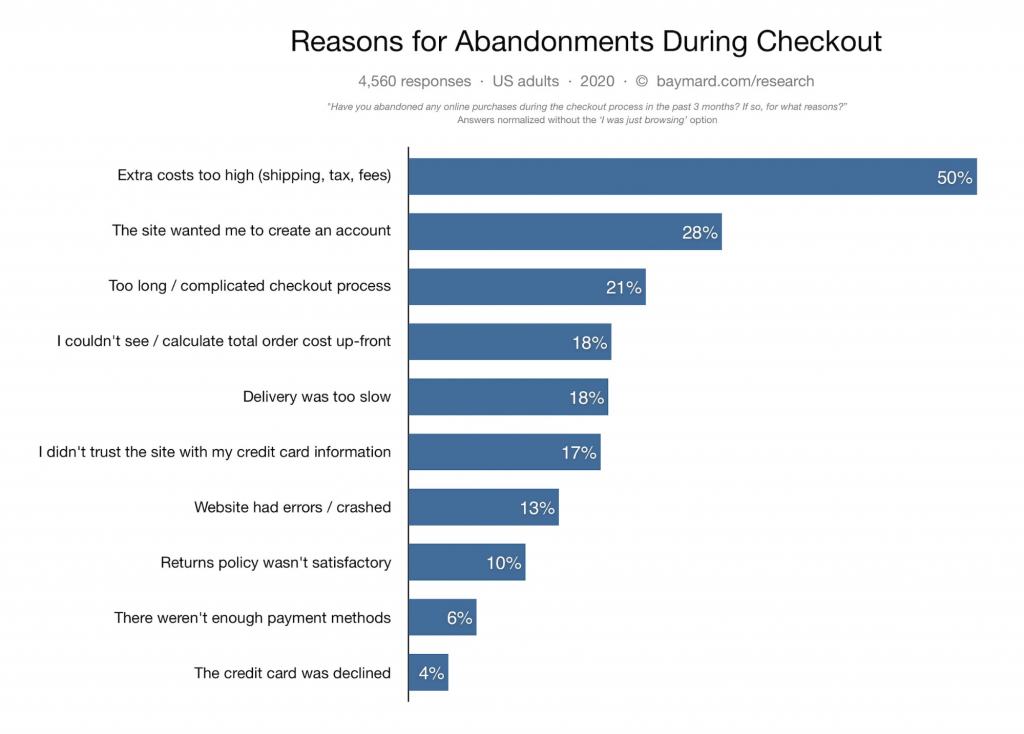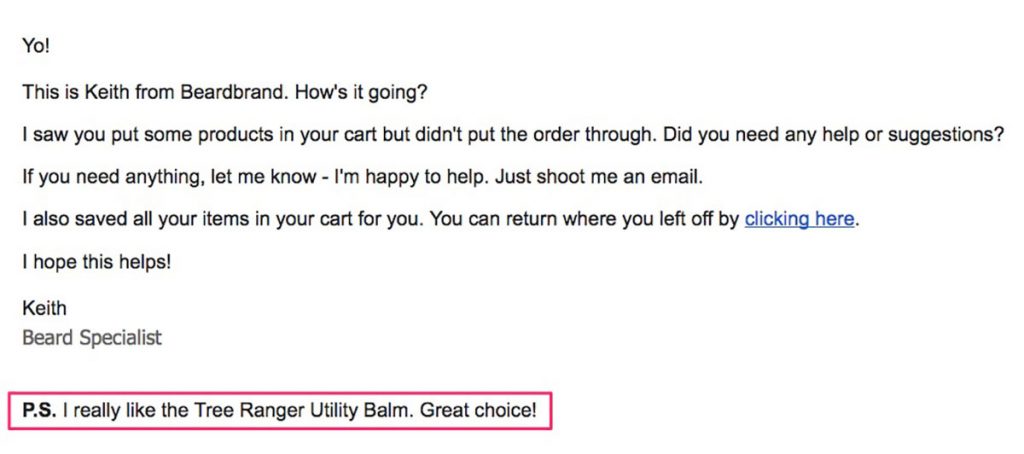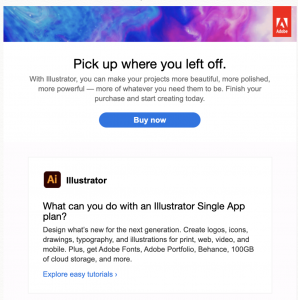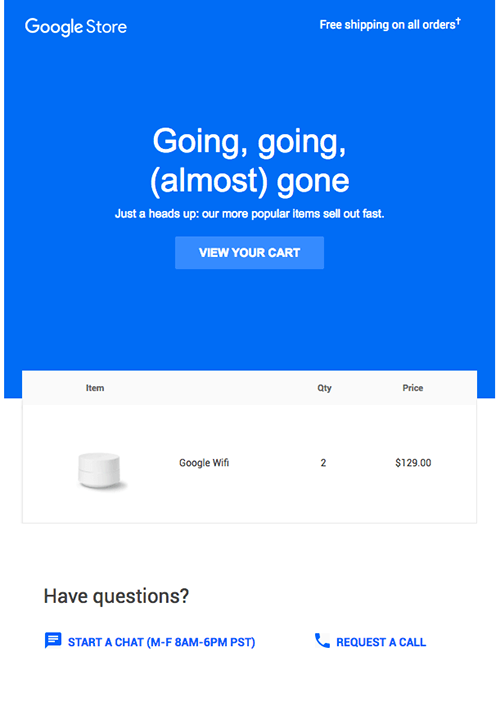When you first hear the term shopping cart abandonment, the first image that may come to mind is a lone shopping cart, a few tumbleweeds rolling by, and maybe some sad music is playing gently in the background.
While this paints somewhat of a picture of what shopping cart abandonment is, that’s not quite it.
So, what exactly is shopping cart abandonment, and do you even care? More importantly, it’s probably time to talk about why you should care.
Cart Abandonment is Money Lost… a Lot of Money
One of the biggest challenges online merchants face today is customers adding items to their cart, only to back out at the last minute. Research shows that as many as 70% of online shoppers abandon their carts before adding their payment details.
When you start to get the picture that only 30 out of 100 visitors on your page will follow through with their purchase, it’s enough to bring on a little perspiration. It’s no wonder why so many online sellers are desperate to bring people back to their abandoned carts. After you realize the gravity of how much money is lost through the purchase process, it’s only natural to wonder what’s going wrong, and more importantly, how to remedy it.
In some cases, abandoned carts happen due to customers being distracted by something else, or maybe they’re not entirely sold on your product compared to your competitors. Believe it or not, there are all sorts of reasons why online shoppers abandon their carts:

Whatever the explanations behind your shopping cart abandonments are, the cold hard truth remains the same: you’ve lost a lot of potential sales. Lost sales that should be a top priority on your list of challenges to solve as an online merchant.
As more and more online sellers become aware of the dilemma of cart abandonment, the more they are starting to uncover how to solve this lost opportunity.
Now for the good news. According to Baymard Institute cart abandonment statistics, $260 billion are recoverable through checkout optimizations. But wait! There’s even more good news. The solution to your cart abandonment woes may be a lot simpler than you might think.
Let’s take a step back and think of an abandoned cart in terms of a brick and mortar store. If a customer were to walk up to your cash register with a full shopping cart and pull out their wallet, only to walk away abruptly, chances are you wouldn’t just watch them walk away in silence, would you?
You’d probably say something around the lines of, “Is everything ok?” “Did you have a question I can answer for you?”
So, why should your reaction to a customer walking away from an online shopping cart be any different?
Convincing your customer to walk back to the cash register and finish their purchase is as simple as speaking up. In your case, as an online seller, the way to speak up is through email.
Before we dive into how to go about effectively emailing a customer who has abandoned their cart, let’s first go over why it’s effective.
Why Cart Abandonment Emails Work
When a customer doesn’t complete a sale, an email is a gentle nudge that politely reminds them they forgot something in their cart. Reminding them that they’re missing out on the incredible product in their cart is a fantastic way to convince them to finish the sale.
You don’t have to take my word for it. There is a lot of data to back up claims about the efficiency and success of cart abandonment emails. A recent report by Klaviyo shows that abandoned cart emails in their study had an average open rate of 41.18% and a click rate of 9.50%. That’s almost double the average email open rate.
From Adobe to Microsoft, you’ll see all of the big software players fully embracing abandoned shopping cart email strategies, because guess what- it works! Data shows that 60% of shoppers go back and purchase products after they receive an email.
If the email is executed effectively, you won’t just be gaining a sale that would have otherwise been lost; you’re doing a service for your customer they’ll appreciate. In other words, everyone wins.
Because of all of the substantial data out there that proves cart abandonment emails do work consistently, there is no arguing their efficacy.
Now that we’ve gotten the why you should be sending out cart abandonment emails part out of the way, let’s get down to the how. Here are the elements that you’ll want to include.
Create a Strong Subject Line
Let’s be honest here. We’ve all received emails that have less than winning subject lines. More often than not, outgoing emails lose their audience’s attention before they’ve even bothered opening the email. *Cue sad trombone sound effect*
Let’s not do that.
Instead, aim for a subject line that has just the right approach and nails exactly what you’re trying to do: get your customer back to their shopping cart.
The fastest way to do that is to pique their interest. Convince your reader why they need to open your email right away. Don’t worry about getting too wordy or elaborate in your approach. Say it like it is. Tell them they’ve forgotten something in their cart, and quite frankly, life won’t be as great without your product.
You get the idea.
If you’re interested in more on advice choosing an engaging subject line, Copyblogger has some great guidelines to check out here.
Get Personal
When we look closely at what works and doesn’t work, the brands that genuinely nail their cart abandonment emails are the ones that get personal.
Adding a customer’s name and the specific product they left in their cart makes them feel more understood. Let’s go with an example by Beardbrand.

While this approach is hardly traditional, it will get their customer’s attention in a big way. Rather than sending out a cold and stiff canned email, Keith is reaching out directly and even offering help or give suggestions.
Keith is a winner. Be a Keith.
Create a Sense of Urgency
Let’s make it clear that an aggressive sales pitch is not the way to send potential customers back to their carts, yet neither is a passive and quiet one. Right in the middle of those two extremes sits your friend, “urgency.”
A sense of urgency is what reminds your customer what they’re missing out on and why. They should be encouraged to act quickly before it’s too late. This idea is to invoke a state of FOMO in your potential customers, urging them to complete their order if they don’t want to miss out.
A great example of a company that’s caught on to creating a great sense of urgency in their abandoned cart emails is Adobe. When customers leave something behind, they receive an email driving them to “finish their purchase and start creating today.”

What could be more convincing than “start creating today” for an artist who wants to create beautiful and polished work?
Include a Call to Action
Last but hardly least, your email should include a call to action. The idea of a call to action is to invite your customers to take the next step immediately. You should make taking the next step so easy for them that it’s impossible not to follow the breadcrumbs.

The breadcrumbs can be anything from including a button to click labeled “Buy Now” to inviting them to “Return to Your Shopping Cart” by offering a discount.
Yes, That’s Right, We Said a Discount
Let’s suppose that your customer hasn’t followed through with checking out of their shopping cart yet because they’re still comparing prices, or maybe they’re just feeling a little frugal.
Offering a discount is the ultimate carrot on a stick that will entice customers to seal the deal. If you’re worried about taking a loss, don’t worry. The small discount you’re offering your customer isn’t nearly as much of a loss as you would have taken had they not purchased at all.
Reclaim More Revenue with Your Own Abandoned Cart Email Strategy
Even though you might not be able to win the sale of every single online shopper that adds your product to their cart, the data shows that it’s worth investing in the effort.
Cart abandonment emails are essential for any software company looking to convert a curious or unsure prospect into a paying customer. It’s in your best interest to reclaim potential sales and decrease cart abandonment once and for all.
![[Customer Story] Why TestDome Considers FastSpring a Real Partner](https://fastspring.com/wp-content/themes/fastspring-bamboo/images/promotional/2023/FastSpring-TestDome-blog-thumbnail.jpg)




